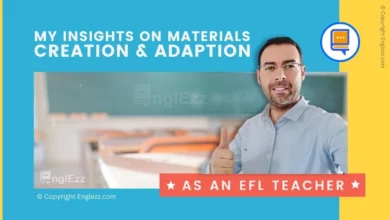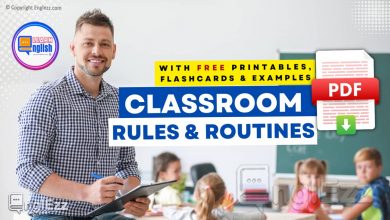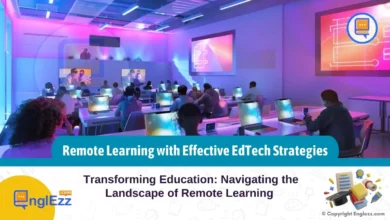Step into the vibrant realm of educational innovation within the British curriculum, where creativity thrives and student engagement blossoms. Embark on a journey through groundbreaking teaching approaches that redefine traditional classroom dynamics, illuminating pathways towards enhanced learning outcomes and enriched educational experiences. As we delve into the dynamic landscape of innovative pedagogy, a tapestry of unconventional methods unfolds before us, offering educators, parents, and educational professionals fresh perspectives to invigorate teaching practices and ignite the spark of lifelong learning in students.
Table of Contents
- Innovative Teaching Approaches within the British Curriculum
- #1. Project-Based Learning: Fostering Critical Thinking and Practical Skills
- #2. Flipped Classroom Model: Transforming Learning with Personalization
- #3. Gamification Techniques
- #4. Differentiated Instruction: Promoting Inclusive Learning Environments
- #5. Collaborative Learning Platforms in British Education
- #6. Inquiry-Based Teaching: Fostering Curiosity and Critical Thinking
- #7. Multisensory Instructional Methods: Enhancing Learning Experiences in British Classrooms
- #8. Technology Integration
- Final Thoughts
- Frequently Asked Questions:
- 1. How can I integrate these innovative teaching approaches into my classroom?
- 2. What benefits do these innovative approaches offer over traditional methods?
- 3. Are there resources available to support teachers in implementing these strategies?
- 4. How can parents support these new approaches at home?
- 5. What impact do these methods have on standardized testing outcomes?
Innovative Teaching Approaches within the British Curriculum
In this enlightening exploration, we embrace the pivotal role of creative teaching methodologies in revolutionizing the educational landscape. By championing inventive approaches that transcend conventional boundaries, we celebrate the transformative power of engaging lesson designs in cultivating not just academic success but holistic growth among learners.

Diving deep into this narrative mosaic, we illuminate how progressive teaching strategies intertwine with student curiosity, fostering an environment where knowledge transcends mere recitation to become a living, breathing entity that ignites passion and propels intellectual exploration. Join us on this odyssey through innovation as we unravel the fabric of traditional education to reveal a kaleidoscope of possibilities awaiting discovery within the realms of British curriculum delivery.
#1. Project-Based Learning: Fostering Critical Thinking and Practical Skills
Project-Based Learning (PBL) represents a groundbreaking approach within the British curriculum, revolutionizing traditional teaching methodologies. By immersing students in hands-on projects that simulate real-world challenges, educators are able to cultivate vital skills such as critical thinking and problem-solving. Through PBL, students transition from passive learners of textbook knowledge to active participants engaged in meaningful, practical applications of their learning. For instance, in a science class project about environmental conservation, students not only grasp scientific principles but also contribute to designing sustainable solutions for local ecological issues.
Real-world projects serve as bridges that connect theoretical concepts to tangible applications, fostering a deeper level of understanding and knowledge retention among students. Whether constructing historical replicas or conducting scientific experiments, these immersive experiences enable learners to contextualize abstract ideas into concrete realities they can interact with. In history classes, reenacting pivotal events through project-based assessments can provide students with a visceral connection to the past, making learning more engaging and memorable. Successful examples of project-based learning initiatives in British schools showcase the transformative impact it has on student engagement and academic achievement.
Whether developing entrepreneurial ventures or engineering prototypes, project-based approaches equip students with invaluable skills beyond rote memorization. These initiatives create opportunities for collaboration, communication, creativity, and critical analysis – essential competencies for success in today’s dynamic world. Moreover, by showcasing the relevance and applicability of their education through tangible outcomes like art installations or community service projects, students develop a deeper appreciation for their learning journey. Through fostering innovation and autonomy while aligning with curriculum objectives, project-based learning emerges as a cornerstone of educational excellence within the British system.
#2. Flipped Classroom Model: Transforming Learning with Personalization
In the realm of innovative teaching approaches in the British curriculum, the flipped classroom model stands out as a revolutionary method that tailors learning experiences to individual students. By flipping traditional teaching dynamics, where students first encounter new material at home through pre-recorded lectures and then engage in hands-on activities in class, this approach promotes personalized education. Students can learn at their own pace, rewind, and review content according to their needs, fostering a deeper understanding of concepts. Moreover, by freeing up classroom time for interactive tasks and collaborative projects, teachers can focus on guiding students through application-based exercises rather than mere content delivery.
One compelling aspect of the flipped classroom is its ability to enhance teacher-student interaction. In traditional settings, instructors often have limited opportunities to engage with each student due to time constraints. However, with pre-recorded lessons as the foundation of learning outside school hours, educators can dedicate more class time to addressing individual challenges and offering personalized support. This increased one-on-one interaction allows teachers to identify and cater to specific student needs effectively. Through this model, educators become facilitators of knowledge exploration and critical thinking rather than sole providers of information.
Numerous success stories highlight the impact of the flipped classroom approach in British schools. For example, a secondary school in London reported significant improvements in student performance after implementing a flipped learning strategy for mathematics classes. Students showcased higher engagement levels during collaborative problem-solving sessions in class compared to traditional lectures. Not only did academic achievement see an upward trend but students also demonstrated improved self-directed learning skills and confidence in tackling complex mathematical problems independently. These outcomes underscore how embracing the flipped classroom model can lead to transformative educational experiences within the British curriculum landscape.
#3. Gamification Techniques
Gamification techniques have revolutionized the landscape of education by infusing elements of fun and interactivity into traditional learning environments. By incorporating game-based strategies, educators can transform mundane lessons into engaging experiences that captivate students’ attention and drive their academic progress. For example, in a history class, students might participate in a virtual scavenger hunt where they uncover clues about historical events through interactive tasks and puzzles. This not only makes learning enjoyable but also enhances retention as students actively apply their knowledge in solving challenges.
Integrating gamified activities into the British curriculum can significantly impact student motivation and participation levels. Through platforms like educational quiz apps or digital escape rooms, teachers can create immersive learning environments that cater to diverse learning styles and preferences. Gamification also fosters healthy competition among students, sparking enthusiasm for academic achievement. For instance, a geography lesson could involve an online map exploration game where students compete to identify countries or landmarks within a time limit, fostering both teamwork and individual skill development.
When incorporating innovative teaching approaches, it’s crucial to start with manageable changes and gradually scale up based on feedback and results. For example, a school might begin by implementing a few gamified activities in one subject area before expanding this methodology across multiple disciplines. By slowly integrating new strategies, educators can assess effectiveness, make adjustments, and ensure sustainable adoption.
One successful example of gamified teaching techniques in the British curriculum is the use of language learning apps that offer rewards, points, or badges for completing language proficiency challenges. This approach not only reinforces vocabulary retention but also encourages consistent practice through positive reinforcement mechanisms similar to those found in popular gaming applications. By leveraging gamification strategies effectively, educators can create dynamic and interactive learning experiences that inspire curiosity, boost student engagement, and ultimately lead to enhanced academic outcomes within the British educational context.
In conclusion, gamification techniques serve as powerful tools for educators seeking to enhance student involvement and learning outcomes within the British curriculum framework. By embracing innovative approaches such as digital simulations, educational games, or interactive quizzes, teachers can tap into students’ intrinsic motivation while fostering critical thinking skills and collaborative problem-solving abilities. The incorporation of gamified activities not only enriches classroom dynamics but also paves the way for a more vibrant and effective educational experience that resonates with 21st-century learners.
#4. Differentiated Instruction: Promoting Inclusive Learning Environments
Differentiated instruction is a powerful method that educators can leverage to address the diverse learning needs present in today’s classrooms. By tailoring teaching strategies to accommodate various learning styles and abilities, teachers create an inclusive environment where every student can thrive. This approach goes beyond a one-size-fits-all model and acknowledges the unique strengths and challenges of each learner. In British educational settings, implementing differentiated instruction enhances student engagement, motivation, and academic success.

One effective way to implement differentiated instruction is through tiered assignments. By offering students varying levels of complexity or support based on their readiness and learning profiles, teachers can ensure that all students are appropriately challenged. For example, in a literature class studying Shakespeare’s works, students could be given different versions of writing prompts ranging from simple analysis tasks to more in-depth critical essays tailored to their skill levels. This allows for personalized learning experiences that cater to individual needs while maintaining high expectations for all learners.
Moreover, incorporating flexible grouping strategies in the classroom enables students to collaborate with peers who have complementary skills or knowledge levels. Teachers can rotate groupings based on ongoing assessments or student preferences, ensuring that interactions are dynamic and purposeful. For instance, during a science project on ecosystems, groups could consist of students with varied strengths such as research skills, artistic talents for visual representations, or strong communication abilities for presenting findings. This collaborative approach not only supports differentiated instruction but also fosters teamwork and social-emotional growth among students in British schools.
#5. Collaborative Learning Platforms in British Education
In the realm of educational innovation within the British curriculum, collaborative learning platforms stand out as transformative tools that promote peer-to-peer interaction and knowledge exchange among students. By utilizing online forums, virtual group projects, and shared workspaces, educators create dynamic environments where learners can engage collectively in problem-solving and critical thinking exercises. These platforms not only enhance collaboration skills but also foster a sense of community within classrooms, encouraging students to work together towards shared goals.
British schools are embracing various collaborative tools to cultivate teamwork and communication among learners. Platforms like Microsoft Teams and Google Classroom have become integral components of modern education, providing spaces for students to collaborate on projects, share resources, and engage in discussions beyond traditional classroom settings. Through these digital mediums, pupils can explore diverse perspectives, offer feedback on each other’s work, and develop essential interpersonal skills vital for success in the 21st-century workforce.
One exemplary use case of collaborative learning platforms lies in virtual group projects where students from different backgrounds come together to tackle complex challenges. By navigating through tasks collectively and leveraging their individual strengths, learners not only enhance their subject knowledge but also refine their communication abilities and teamwork dynamics. Such immersive experiences prepare students for a future where collaboration and adaptability are key skills in navigating an increasingly interconnected world. Collaborative learning platforms thus serve as bridges between theoretical concepts taught in classrooms and real-world applications, empowering students to apply their learning in practical contexts with confidence and competence.
#6. Inquiry-Based Teaching: Fostering Curiosity and Critical Thinking
Inquiry-based teaching stands as a cornerstone of transforming British curriculum delivery, offering students the opportunity to embark on intellectual journeys fueled by curiosity and critical thinking. By posing probing questions that spark investigation and independent exploration, educators can ignite a passion for learning within their classrooms. This approach not only deepens comprehension but also nurtures essential research skills vital for academic success and personal growth. Through inquiry-based teaching, students are encouraged to seek answers through analysis, experimentation, and reflection, thus empowering them to become active participants in their own learning process.
Guiding questions play a pivotal role in inquiry-based teaching by steering students towards thoughtful inquiries that lead to meaningful discoveries. These questions serve as beacons that illuminate pathways to knowledge acquisition and understanding, guiding learners through complex concepts in a systematic manner. By instilling a sense of wonder and inquiry in students, educators cultivate an environment where intellectual curiosity thrives, enabling young minds to explore new ideas with enthusiasm and purpose. The impact of well-crafted guiding questions is profound, shaping the way students engage with content and fostering a culture of inquiry within educational settings.
To exemplify the effectiveness of inquiry-based teaching within the British curriculum, case studies provide concrete evidence of its positive outcomes on student learning. For instance, a primary school science project centered around environmental sustainability prompted students to investigate local ecosystems using inquiry-driven methods. As they formulated hypotheses, conducted experiments, and analyzed data collaboratively, pupils not only enhanced their scientific proficiency but also developed a deep appreciation for environmental stewardship. Such immersive experiences underscore how inquiry-based approaches can transform traditional lesson plans into dynamic learning adventures that captivate student interest while nurturing essential cognitive skills necessary for future academic pursuits.
Continuous professional development is key to successfully implementing innovative teaching approaches. Educators should attend workshops, training sessions, and conferences focused on pedagogical advancements to stay current with best practices. For instance, educators could participate in project-based learning seminars or webinars on differentiated instruction techniques tailored to the British curriculum context. Investing in teacher training enhances instructional quality and promotes student success.
In summary, inquiry-based teaching serves as a catalyst for stimulating curiosity, promoting critical thinking skills, and fostering independent exploration among students within the British curriculum framework. By harnessing the power of thought-provoking questions and engaging investigations, educators pave the way for transformative learning experiences that empower learners to delve deeper into subject matter while honing valuable research competencies essential for holistic education.
#7. Multisensory Instructional Methods: Enhancing Learning Experiences in British Classrooms
Incorporating multisensory instructional methods in the British curriculum can revolutionize how students engage with educational content. By leveraging auditory, visual, kinesthetic, and tactile modalities, educators can cater to diverse learner preferences and create immersive learning experiences. For example, in a science lesson about the solar system, teachers can use visual aids like diagrams or videos to appeal to visual learners, conduct hands-on experiments for kinesthetic learners, incorporate audiobooks or discussions for auditory learners, and provide tactile materials like models for tactile learners. This approach not only ensures that each student’s unique learning style is accounted for but also enhances comprehension and retention.
Sensory-rich experiences have been shown to be highly effective in stimulating memory retention and deepening concept mastery among students. When students are actively engaged through multiple senses, they are more likely to retain information and make meaningful connections between concepts. For instance, in history lessons about ancient civilizations, incorporating virtual reality simulations can transport students back in time visually and auditorily while engaging them kinesthetically as they interact with the virtual environment. These immersive experiences foster a deeper understanding of historical events by making them come alive for the learners.
To effectively incorporate multisensory techniques in British classrooms, educators can start by conducting assessments to identify students’ predominant learning styles and preferences. By understanding how each student best absorbs information, teachers can tailor their lessons to accommodate various sensory modalities. Furthermore, integrating interactive activities such as role-playing exercises for kinesthetic learners or multimedia presentations for visual learners can enrich the educational experience. Embracing technology tools like interactive whiteboards or educational apps can also enhance multisensory learning environments by providing dynamic visual and auditory stimuli. By creating inclusive classrooms that cater to diverse sensory needs, educators empower all students to thrive academically and personally through engaging multisensory instruction methods.
#8. Technology Integration
In today’s educational landscape, technology integration has become an essential component of innovative teaching approaches within the British curriculum. Embracing digital tools and resources not only enhances students’ learning experiences but also equips them with essential 21st-century skills. By incorporating technology into lessons, educators can personalize instruction, cater to diverse learning styles, and create dynamic classroom environments. For instance, utilizing interactive whiteboards for visual demonstrations, educational apps for personalized practice, or online simulations for immersive learning can significantly impact student engagement and knowledge retention.
Foster a culture of collaboration among educators within your institution or across schools to share insights and best practices regarding innovative teaching methods. Establishing regular meetings or online forums where teachers can exchange ideas, resources, and successes can cultivate a supportive community of practice. By collaborating with peers, educators can gain inspiration, troubleshoot challenges collectively, and collectively advance the transformation of the British curriculum through innovative pedagogy.
Furthermore, technology integration opens up avenues for collaborative learning beyond the confines of traditional classrooms. Virtual platforms allow students to engage in group projects, share ideas seamlessly, and connect with peers globally. With the rise of distance learning and hybrid models of education, integrating technology into teaching practices enables educators to adapt to evolving educational needs effectively. From virtual field trips to video conferencing for guest speakers, technological advancements offer endless possibilities for enhancing the British curriculum delivery in ways that were previously unimaginable.
By leveraging tools like Learning Management Systems (LMS), Augmented Reality (AR), or Virtual Reality (VR), teachers can create interactive and immersive learning experiences that transcend conventional boundaries. Whether it’s using VR simulations to explore historical events or AR applications to visualize complex scientific concepts, technology integration empowers educators to make learning more engaging and impactful. As schools increasingly embrace digital transformation, the strategic integration of technology is key to fostering a future-ready generation of learners equipped with the skills necessary to thrive in a rapidly advancing world.
Final Thoughts
In conclusion, these innovative teaching approaches within the British curriculum are not mere trends but transformative methods that elevate traditional education standards.
- Project-based learning fosters critical thinking; the flipped classroom model promotes personalized instruction; gamification techniques enhance engagement;
- differentiated instruction caters to diverse learners; collaborative platforms encourage teamwork; inquiry-based teaching stimulates curiosity;
- multisensory methods accommodate various preferences; and technology integration revolutionizes classroom dynamics.
By embracing these approaches collectively or individually based on specific educational goals and student needs, educators can truly transform the British curriculum delivery into a dynamic and inclusive experience that prepares students for success in an ever-evolving world of opportunities.
As we envision a future where education transcends traditional boundaries, it is imperative to embrace change and adapt teaching methodologies that resonate with the digital age learners. By incorporating technology seamlessly into pedagogical practices, educators can create dynamic and engaging learning environments that empower students to thrive in an ever-evolving world. Remember, at the heart of every innovative teaching approach lies a commitment to nurturing intellectual curiosity and inspiring students to become active participants in their own educational journey.
Frequently Asked Questions:
1. How can I integrate these innovative teaching approaches into my classroom?
– Start small by experimenting with one approach at a time and gradually incorporate more as you see fit.
2. What benefits do these innovative approaches offer over traditional methods?
– They promote student engagement, critical thinking, collaboration skills, and cater to diverse learning styles effectively.
3. Are there resources available to support teachers in implementing these strategies?
– Yes, various online platforms offer lesson plans, training programs, and professional development opportunities centered around innovative teaching methods.
4. How can parents support these new approaches at home?
– Parents can encourage exploration, creativity, and curiosity outside of school hours by providing enriching activities that align with the concepts learned in the classroom.
5. What impact do these methods have on standardized testing outcomes?
– While focused on holistic development rather than rote memorization for exams alone, these approaches often result in improved test scores due to enhanced understanding and application of knowledge.








